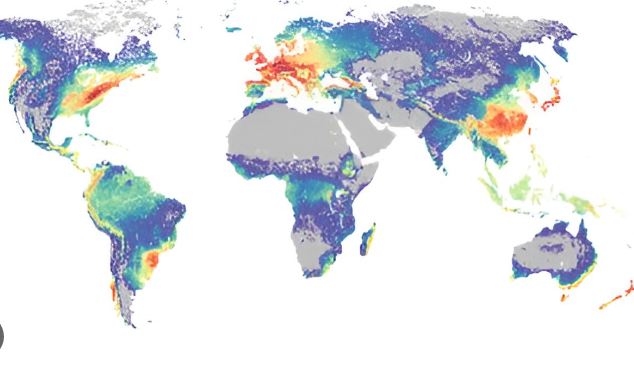- Homepage
- Science and Technology
- Challenging Ecological Norms: Insights from Yeast Communities
Challenging Ecological Norms: Insights from Yeast Communities
Breaking Barriers in Macroecological Patterns and Evolutionary Ecology
Yeast, often overlooked in ecological studies, have emerged as fascinating subjects challenging conventional wisdom in ecological norms. In a groundbreaking study published in Proceedings of the National Academy of Sciences, Kyle David and his collaborators shed light on the ecology of yeast communities, revealing unexpected patterns that defy longstanding macroecological principles. This research not only provides insights into the ecological dynamics of yeast but also underscores the importance of expanding existing theory to accommodate the diverse complexities of microbial ecosystems.
Unraveling Ecological Anomalies: Yeast Distribution and Abundance Traditionally, ecological theories have posited that species diversity increases near the equator and in warmer climates, with larger species ranges observed farther from the equator. However, David and his team discovered a stark deviation from these norms. Through meticulous analysis of 186 yeast species, they found that yeast communities thrive most abundantly in montane forest habitats. This unexpected preference for montane forests challenges conventional hypotheses, suggesting that elevation gradients along mountainsides create unique micro-habitats conducive to yeast diversity.

Specialist-Generalist Dynamics: Insights from Metabolic Diversity Intriguingly, the study also unveiled a striking relationship between yeast metabolic capabilities and species ranges. Yeast species that metabolize fewer carbohydrates exhibit more restricted ranges compared to their counterparts with broader metabolic capacities. This specialist-generalist relationship not only highlights the biochemical intricacies of yeast metabolism but also underscores its implications for macroecological patterns. David’s findings illuminate the intricate interplay between biochemical processes and ecological dynamics, providing a deeper understanding of species distributions in natural ecosystems.
Filling Knowledge Gaps: Exploring Yeast Ecology in Nature While yeast-human interactions in medical and commercial settings have been extensively studied, their ecology in natural environments remains largely unexplored. This study bridges this gap by uncovering the ecologies of yeast beyond human-centric contexts. By acknowledging yeast as integral components of natural ecosystems, researchers gain valuable insights into their diverse ecological roles and interactions. David emphasizes the importance of considering yeast ecology within broader ecological frameworks, moving beyond isolated laboratory settings to understand their complex interactions in the natural world.
Future Directions: Genomic Insights and Collaborative Endeavors Building on this groundbreaking research, David and his collaborators are delving deeper into the evolutionary innovations shaping yeast metabolic capabilities. By investigating gene duplications and evolutionary adaptations, they aim to unravel the genetic underpinnings of yeast ecology and distribution. This ambitious endeavor is conducted in collaboration with the Y1000 project, a monumental effort to sequence and analyze the genomes of all known yeast species within the subphylum Saccharomycotina. Through genomic exploration, researchers aspire to unlock the genetic and functional diversity of yeast communities, paving the way for comprehensive insights into their evolutionary ecology.

Read More News:
- Clash of Titans: H-E-B Chairman Counters Abbott’s School Voucher Agenda
- Unraveling the Complexities of Gaza Aid: Challenges and Progress
The study by Kyle David and his team represents a paradigm shift in our understanding of yeast ecology, challenging traditional ecological norms and uncovering hidden complexities within microbial communities. By elucidating the ecological dynamics of yeast distribution, metabolic diversity, and evolutionary adaptations, this research opens new avenues for exploring the intricate interplay between microorganisms and their environments. As we delve deeper into the microbial world, we gain profound insights into the fundamental principles governing ecological systems, paving the way for more holistic approaches to biodiversity conservation and ecosystem management.




